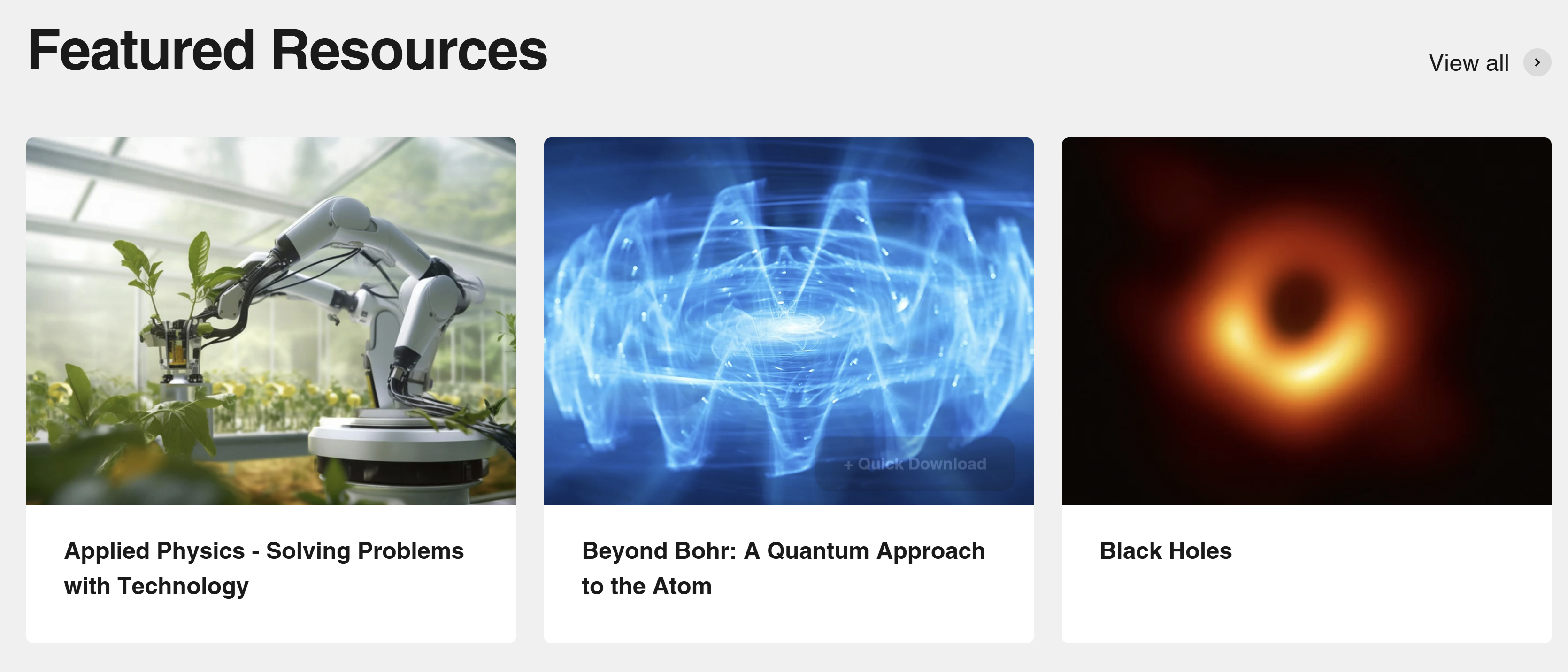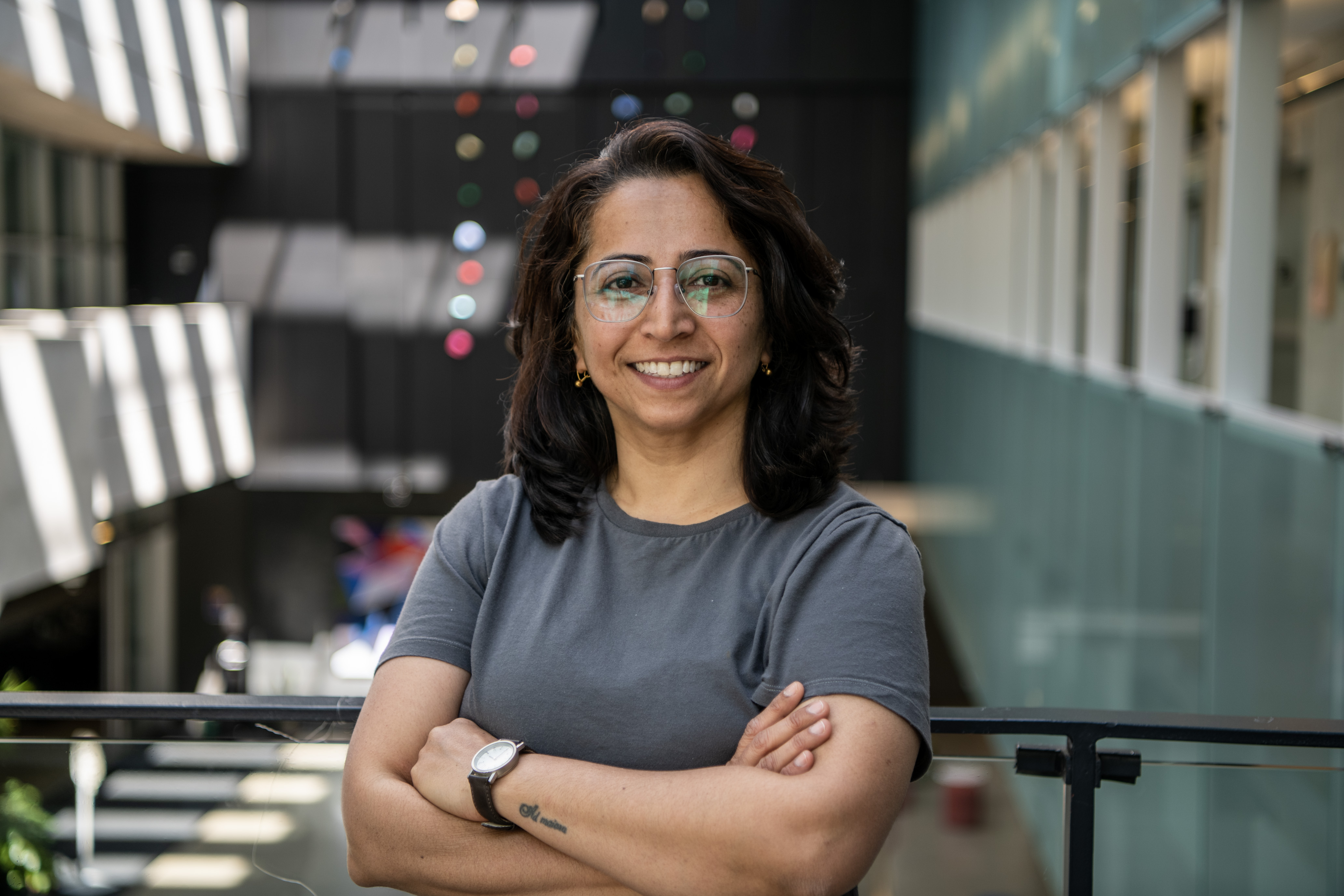Using everyday analogies to explain quantum physics – one of the core models that describes the nature of our universe – has its quirks. For example, to understand a property called electron spin, a common refrain is to imagine a spinning ball: except there’s no ball, and it’s not actually spinning.
Wrapping your head around the abstract world of quantum mechanics can be challenging. “Quantum – it’s abstract, it’s hard to touch,” says Damian Pope, outreach scientist at Perimeter Institute. “A lot of people learn better from tangible things.”
That’s where Perimeter’s outreach team comes in. The Institute’s outreach programs and resources specialize in hands-on activities to bring the world of STEM – including quantum – to life for students, teachers, and curious minds of all ages.
Their latest classroom resource, Quantum Technology, is the perfect place to start for teachers new to quantum and looking for fun, accessible, and hands-on activities.
And the numbers don’t lie: people have an appetite for quantum. In 2024, Quantum Model of the Atom was the number one downloaded educational poster in a series provided free-of-charge by Perimeter. And an advanced classroom resource for Grade 11 and 12 students, Beyond Bohr: A Quantum Approach to the Atom, was one of the top five downloaded teacher resources for 2024.
Bringing quantum to the classroom
Students are particularly interested in quantum, says Lorraine Blackwell, program manager in educational outreach at Perimeter Institute. “Students are asking questions of their teachers, and the teachers don’t always have answers,” she says. “We have an extensive worldwide network of teachers that are downloading Perimeter’s resources to bring to their classrooms.”
Perimeter’s resources provide high quality, accessible information to support educators and students around the world on their learning journey.
Ashley McCarl Palmer and Dave Fish, two of Perimeter’s teachers-in-residence, say it’s important for the public to have access to high quality quantum resources. Quantum is a fundamental science behind many technologies today, so we need to equip students and teachers with the tools to be successful in the future. From the lasers in supermarket barcode scanners to quantum dots in high-definition TVs, quantum is everywhere.
The outreach team provides detailed guides for what they call ‘kitchen physics’ – experiments and models that can be built out of simple, inexpensive materials. This keeps lessons low-cost and easy for educators. With some paper cups, coloured sand, and plastic film, students can recreate the infamous double-slit experiment that showed light behaves as both a particle and a wave.
Separating the science from the fiction
Students are curious about all the ‘weird’ aspects of quantum, says Pope. With the popularity of cultural juggernauts like Marvel’s Ant-Man and the Wasp: Quantumania, students are sorting through what’s science fiction and what’s science fact. But Pope sees this curiosity as a positive.
“If people are curious, if they’ve got that hunger to learn, I try to build on that,” Pope says. “The worst is if they didn’t have any questions.”
Perimeter’s resources aim to capitalize on the excitement of quantum while also dispelling the myths that go along with it, says Blackwell. The team aims to have students and teachers understand the scientific process and become critical consumers of information.
The ethics of quantum
“Quantum is a growing industry, especially in Canada, and to develop the technology in an efficient and responsible manner requires education,” says Bindiya Arora, PSI fellow and co-lead of Perimeter’s Ethics in Physics Working Group, which has a goal of educating the public about responsible quantum development. “We need to educate students in a holistic manner so that they can make informed decisions related to their career options.”
Increasing scientific literacy around quantum extends beyond the classroom to the public. Arora says there’s a lot we can learn from the overhype of AI in steering responsible quantum education today.
“AI winter” is the term attributed to the myths that overpromised on AI’s benefits in the previous century. Arora points to an article by Joan Arrow, Founder and CEO of the Quantum Ethics Project, that outlines the history. Researchers in the 1950s hyped AI, but the field was lacking in resources to support the claims. Despite a period of investment by both government and private groups into AI development, the lack of supporting infrastructure led people to lose trust in the technology.
“And it’s only in the last few years, when we had the infrastructure to build AI, that AI has revived. So we don’t want to make the same mistakes by overhyping and overpromising any field.”
At the same time, Arora notes being overly skeptical about quantum technology would also be a mistake. Responsible education can provide a well-rounded picture of the technologies so that people and policy makers can make informed decisions regarding investments and regulations.
At the end of the day, learning about quantum and the way the universe works is exciting. “It’s humanity’s best model of nature so far,” says Pope. “Ultimately quantum describes and explains why your breakfast cereal tastes the way it does, how your coffee mixes with milk.”
“I think it’s one of the most amazing things humans have created, up there with Shakespeare and Mozart in terms of cultural achievements.”
Ready to dive into the world of quantum? Here’s a list of resources that Perimeter provides for quantum education. There’s something for everyone, whether you’re a teacher, student, or quantum enthusiast.
Quantum education resources
| Resource | Link |
| Quantum Technology | https://resources.perimeterinstitute.ca/products/quantum-technology |
| Beyond Bohr: A Quantum Approach to the Atom | https://resources.perimeterinstitute.ca/products/beyond-bohr-a-quantum-approach-to-the-atom |
| Quantum Model of the Atom Poster | https://resources.perimeterinstitute.ca/products/beyond_bohr_poster |
| The Challenge of Quantum Reality | https://resources.perimeterinstitute.ca/products/the-challenge-of-quantum-reality |
| Investigating Planck’s Constant with LEDS | https://resources.perimeterinstitute.ca/products/investigating-plancks-constant-with-leds |
| Contemporary Physics | https://resources.perimeterinstitute.ca/products/contemporary-physics |
| Quantum to Cosmos: A Journey through the Universe | https://quantumtocosmos.ca |
| Quantum 101: Quantum Science Explained by Katie Mack | https://www.youtube.com/playlist?list=PLaLvSxPpI1c0z5V_T28u3fUrRtiyhwEmQ |
Education resources
| Resource | Link |
| Educator Courses for Teachers | https://perimeterinstitute.ca/outreach/teachers/educator-courses-teachers |
| Einstein Plus Workshop for Teachers | https://perimeterinstitute.ca/outreach/teachers/einsteinplus-workshop |
| Classroom Simulations for Teachers | https://perimeterinstitute.ca/outreach/teachers/classroom-simulations-teachers |
| EinsteinPlus Workshop | https://perimeterinstitute.ca/outreach/teachers/einsteinplus-workshop |
| News and Ideas from Perimeter | https://perimeterinstitute.ca/news-and-ideas |
About PI
Perimeter Institute is the world’s largest research hub devoted to theoretical physics. The independent Institute was founded in 1999 to foster breakthroughs in the fundamental understanding of our universe, from the smallest particles to the entire cosmos. Research at Perimeter is motivated by the understanding that fundamental science advances human knowledge and catalyzes innovation, and that today’s theoretical physics is tomorrow’s technology. Located in the Region of Waterloo, the not-for-profit Institute is a unique public-private endeavour, including the Governments of Ontario and Canada, that enables cutting-edge research, trains the next generation of scientific pioneers, and shares the power of physics through award-winning educational outreach and public engagement.



